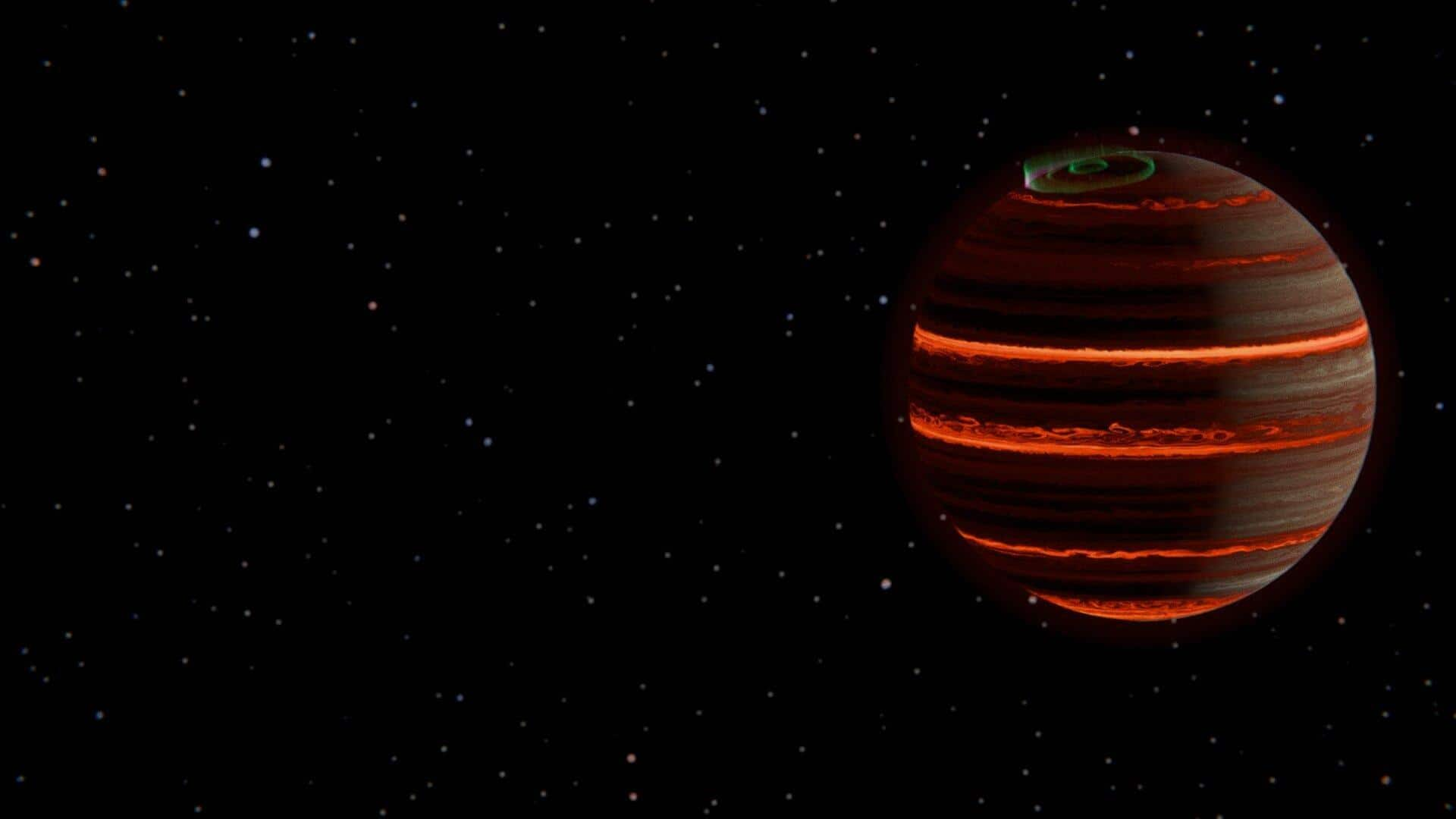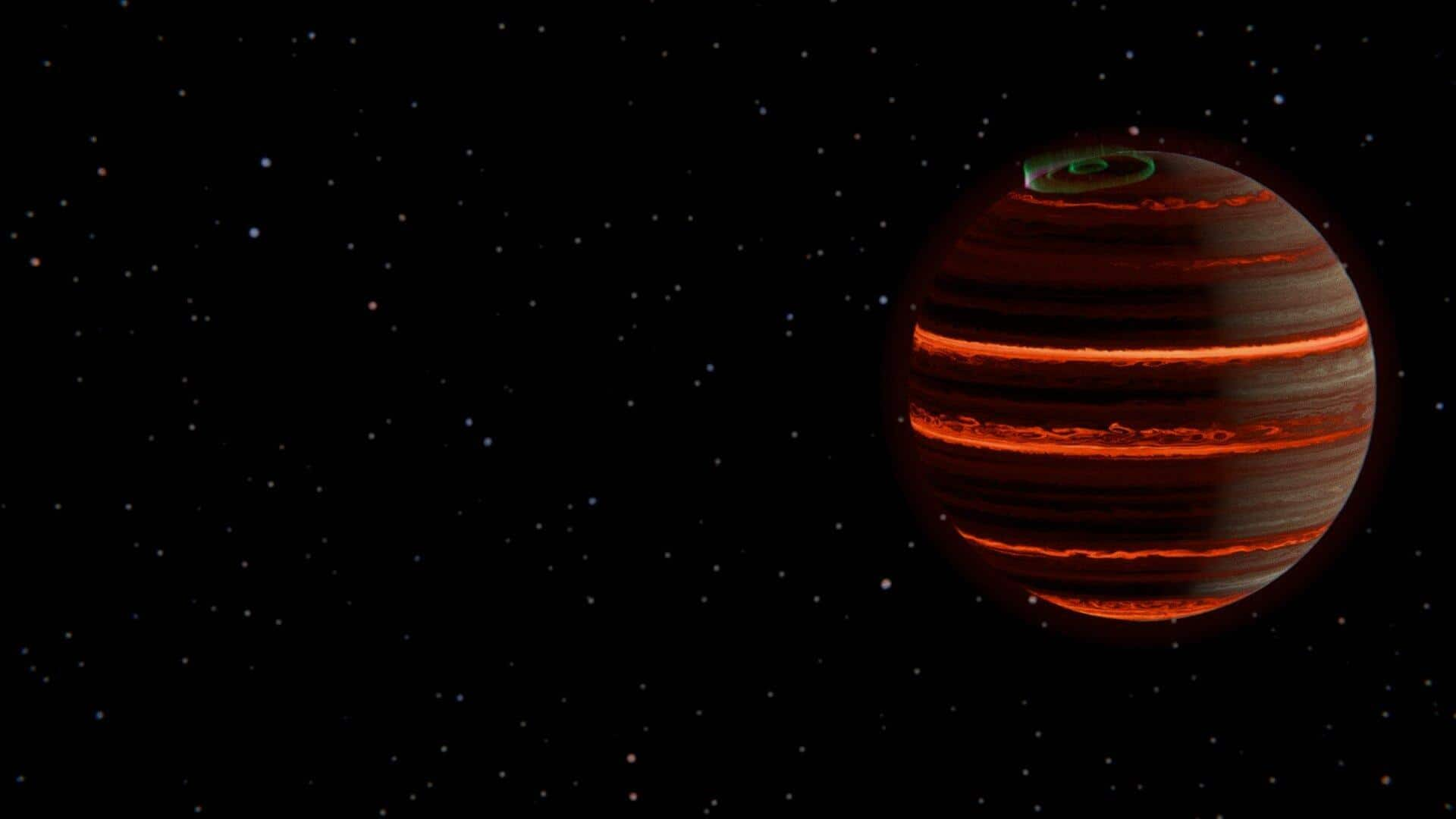**‘Rogue’ Planet Exhibits Auroral Activity Similar to Northern Lights**
*By Dwaipayan Roy | September 27, 2025, 04:01 PM*
Astronomers from Trinity College Dublin have made a groundbreaking discovery studying a rogue planet named SIMP-0136, revealing auroral activity akin to Earth’s Northern Lights. This remarkable observation was made possible using the NASA/ESA/CSA James Webb Space Telescope, with the findings published recently in the journal *Astronomy & Astrophysics*.
### What is a Rogue Planet?
Rogue planets are celestial bodies that drift through space independently, not orbiting any star. SIMP-0136 is one such planet, offering scientists a rare opportunity to study atmospheric phenomena in an isolated environment.
### Advanced Atmospheric Analysis with the James Webb Space Telescope
Utilizing the cutting-edge instruments aboard the James Webb Space Telescope, the research team detected subtle changes in SIMP-0136’s brightness as it rotated. These variations allowed them to monitor fluctuations in temperature, cloud cover, and chemical composition across the planet’s atmosphere.
Dr. Evert Nasedkin, from Trinity College Dublin’s School of Physics, remarked, “These are some of the most precise measurements of the atmosphere of any extra-solar object to date.”
### Temperature Fluctuations and Storm Activity
The observations unveiled that SIMP-0136 experiences temperature changes of less than five degrees Celsius. These minor fluctuations were linked to subtle shifts in the planet’s chemical makeup, suggesting storm activity reminiscent of Jupiter’s well-known Great Red Spot.
“The precise observations we made meant we could accurately record temperature changes smaller than 5ºC,” Dr. Nasedkin explained.
### Constant Cloud Coverage
Unlike Earth, where cloud cover varies and influences atmospheric conditions, SIMP-0136’s cloud coverage was found to be consistent across its surface. These clouds differ significantly from terrestrial clouds; they are composed of silicate grains—akin to fine beach sand—due to the planet’s extremely high temperatures.
This research forms the inaugural publication by the newly established “Exo-Aimsir” group, led by Professor Johanna Vos at Trinity College Dublin.
### Inferring Atmospheric Features through Cutting-Edge Models
The team’s analysis also revealed that different wavelengths of light correspond to distinct atmospheric characteristics. By employing advanced modeling techniques, they could infer details about the planet’s atmospheric temperature, chemical composition, and cloud positioning.
Dr. Nasedkin noted, “Using cutting-edge models, we could infer the temperature of the atmosphere, the chemical composition, and the position of the clouds.”
Professor Vos commented on the significance of their work, stating, “This study is exciting as it demonstrates how state-of-the-art modeling techniques can deepen our understanding of weather processes on exoplanets beyond our solar system.”
—
This landmark study of SIMP-0136 not only expands our knowledge of rogue planets but also paves the way for future explorations into atmospheric phenomena far beyond Earth.
https://www.newsbytesapp.com/news/science/astronomers-observe-auroras-on-rogue-planet-simp-0136-using-webb-telescope/story


